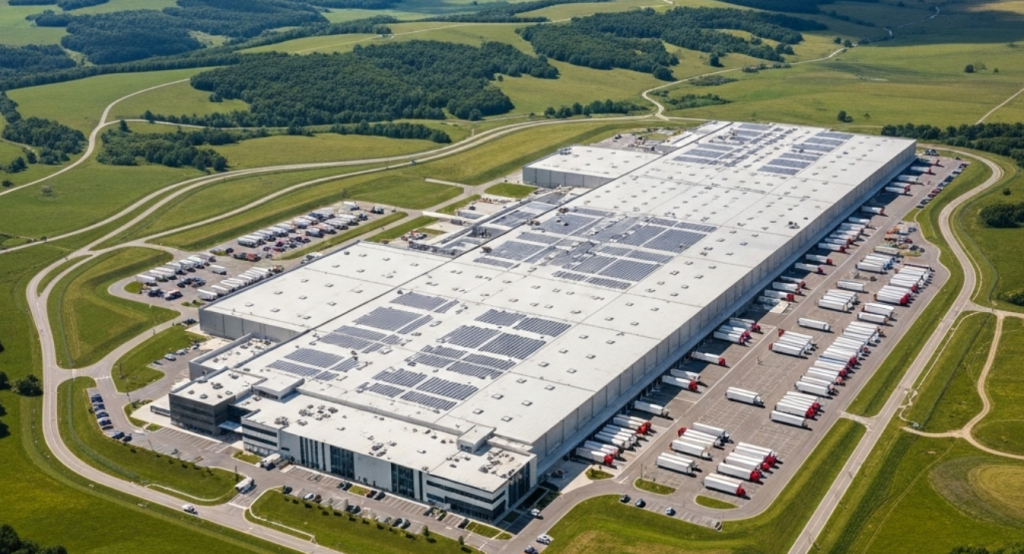Distance plays a critical role in cold-chain logistics success. Each additional mile increases shipping costs, requires more refrigerant, and creates more opportunities for temperature fluctuations that can compromise product quality. When customers receive melted ice cream or spoiled proteins, the damage extends far beyond a single order. It erodes trust and drives customer acquisition costs higher as word-of-mouth turns negative.
That’s why smart cold-chain brands eventually stop trying to serve the entire country from one warehouse. Geographic expansion isn’t just about growth, it’s about survival.
Why Fulfillment Geography Matters in Cold-Chain Logistics
Many brands launch with centralized fulfillment because it simplifies operations and minimizes fixed costs. However, as order volume and geographic reach expand, this approach creates many inefficiencies. Long-distance shipments to zones 6-8 are loaded with premium rates while demanding additional refrigerant to maintain product integrity.
The compounding effect is significant: higher per-unit logistics costs, increased spoilage risk, and reduced delivery reliability, particularly during peak seasons or adverse weather conditions.
Data That Should Trigger a Fulfillment Network Expansion
Before you expand into a new fulfillment center (or reevaluate your 3PL partner) analyze:
- Shipping time heat-maps Identify ZIP code clusters with 3–4 day transit times. These are freshness risks.
- Customer concentration by region Use eCommerce order data to identify areas with sustained, high-volume demand.
- Shipping zone cost trends Long-zone deliveries (zones 5–8) often carry the highest cost-per-order and greatest spoilage risk.
- Refrigerant usage by region If you’re using significantly more dry ice or gel packs for certain zones, it’s a red flag.
- Delivery performance by region Monitor refunds, SLA misses, and “delivered warm” complaints geographically.
Strategic U.S. Regions for Cold-Chain Fulfillment Expansion
Fulfillment geography isn’t just about speed. It’s about reducing variability, protecting freshness, and controlling margin. Some regions consistently offer these advantages, thanks to infrastructure, location, and demand density.
Nevada is one of the most reliable fulfillment states for the West Coast. It enables 1–2 day ground shipping across Nevada, California, Arizona, Utah, and the Pacific Northwest.
Dallas–Fort Worth, Texas is increasingly popular for its central location and 1-2 day ground reach to both coasts. It also offers close access to Southern markets like Houston and Atlanta, along with a growing ecosystem of cold-storage providers and favorable operating costs.
In the Northeast, New Jersey and Eastern Pennsylvania serve as the best option for high-density coverage. They reach major cities like New York, Boston, Philadelphia, and Washington D.C. within 1 day.
Michigan plays a key role in nationwide fulfillment coverage, offering 1-day reach to Chicago. From here, most of the U.S. is accessible within 2-3 days by ground. It’s ideal for brands expanding into the Midwest or seeking network balance during peak seasons and weather disruptions.
Having a Florida fulfillment location is key to serving the entire state efficiently. As one of the hardest states to reach quickly, shipping from afar is costly, with the year-round heat requiring more refrigerant. Local fulfillment reduces transit times, cuts costs, and ensures 1-day reach to Miami.
These locations are often chosen not just for their reach, but for their cold-chain reliability. The result is a network that supports speed and stability, without relying on expensive packaging or overnight delivery.
Building a Scalable, Resilient Fulfillment Strategy
A modern cold-chain fulfillment strategy doesn’t rely on a single national hub. Instead, brands grow into multiple nodes over time—adding locations when their volume, cost structure, or customer experience starts to suffer.
Expanding your fulfillment network can help you:
- Reduce your average shipping zones and associated costs
- Improve consistency of delivery time and freshness
- Lower the need for excessive refrigerant
- Better absorb peak season shocks or weather-related disruption
Your network should evolve as your customer base grows. This gives you both reach and reliability.
Final thoughts
Cold-chain fulfillment goes beyond simply transporting frozen and chilled goods between locations. It’s about achieving reliable, cost-effective delivery while maintaining uncompromising quality standards. As demand increases and your footprint expands, the smartest brands invest in regional fulfillment not just for growth, but to protect the cold-chain itself.
If you’re starting to feel the strain of long-zone shipping, increased spoilage risk, or rising packaging costs, geography may be your biggest unlock. Let’s discuss: partnerships@gripshipping.com.



